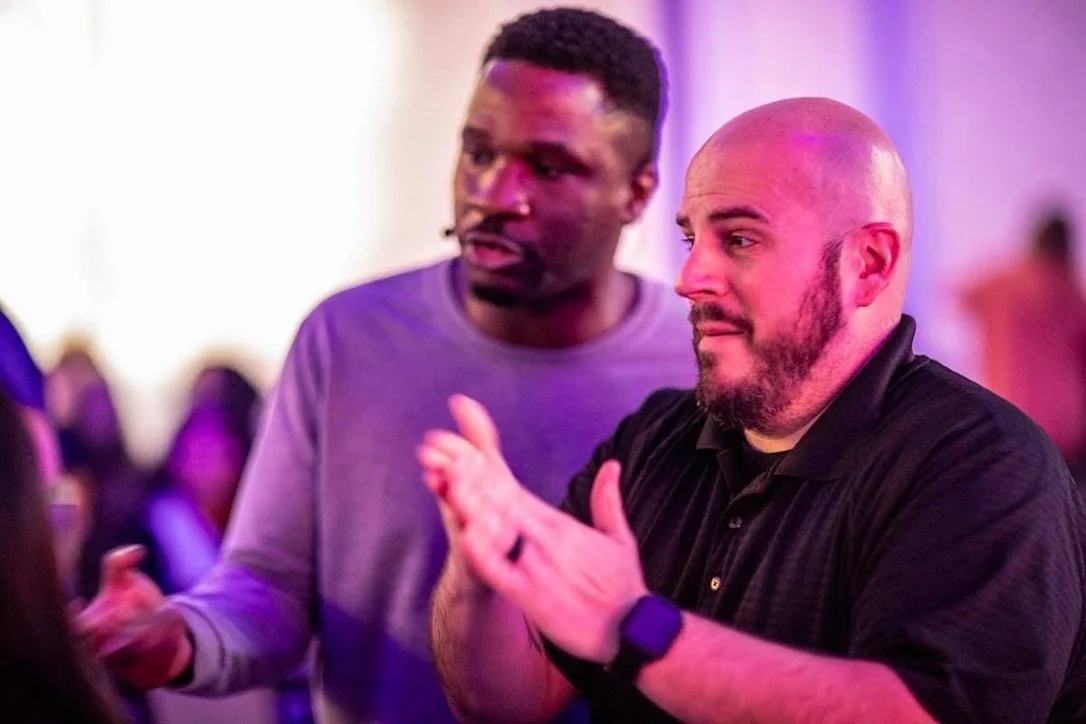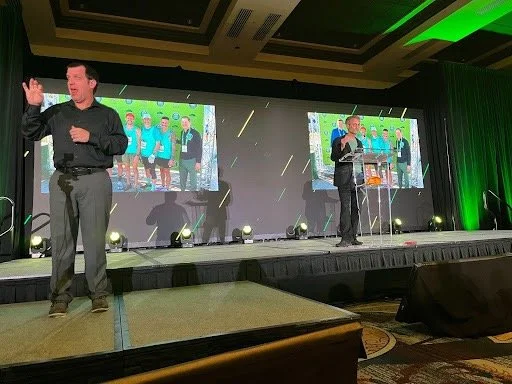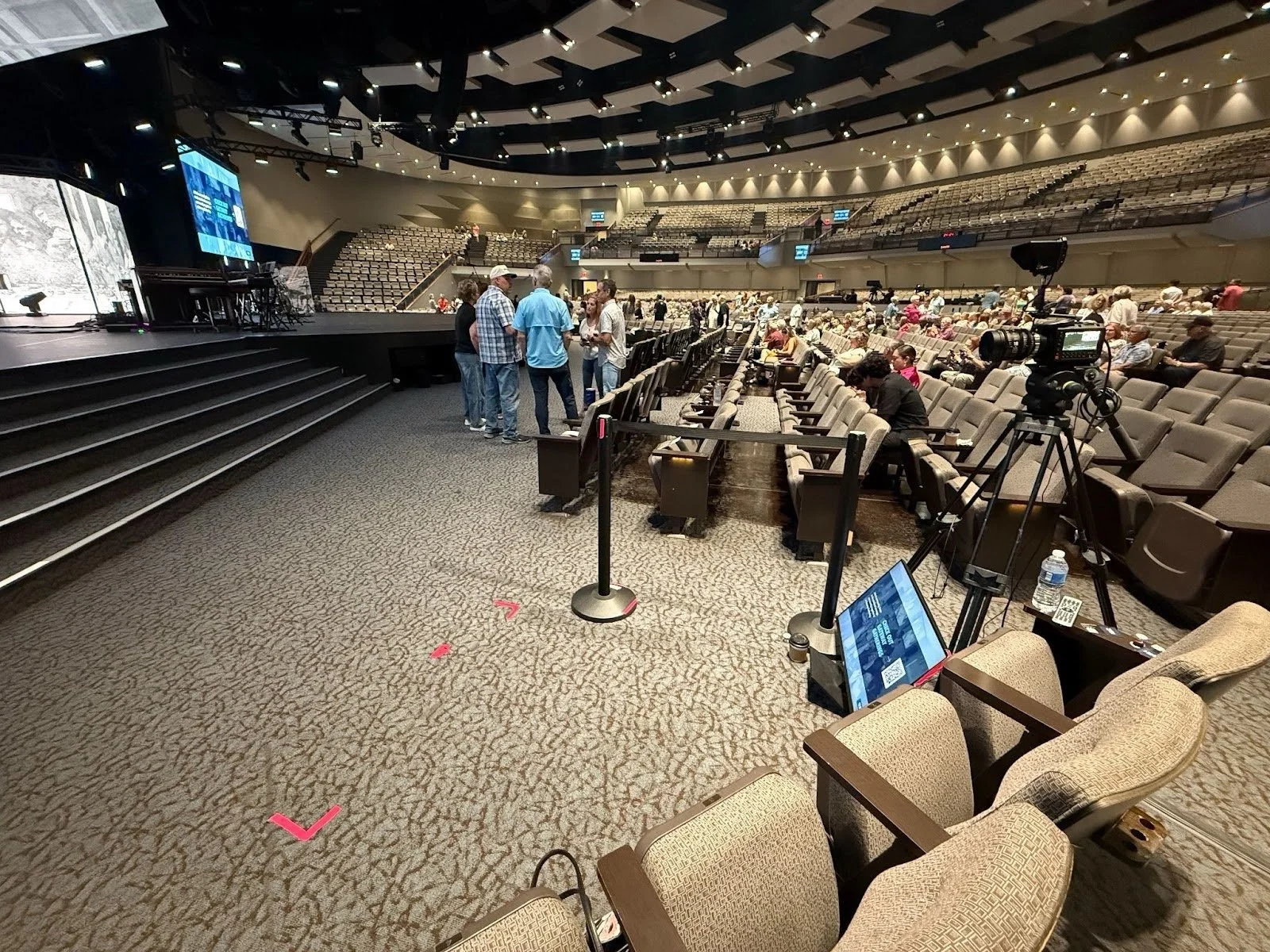Making Christian Conferences Accessible
Best Practices for Deaf Inclusion
At Sonshine Interpreting, we believe every believer should have full access to worship, teaching, and community without barriers. That includes our Deaf brothers and sisters. Yet, did you know the Deaf community is the third biggest unreached people group worldwide? That alone should prompt a shift in how we plan our conferences and gatherings. Every moment matters, and creating spaces where Deaf Individuals can fully engage with the gospel is a Kingdom priority.
This guide is here to help you, conference planners, ministry leaders, and event organizers truly understand what it means to provide full access. Whether you are hosting a one-day summit, a weekend retreat, or a multi-day leadership conference, the way you plan for Deaf inclusion reflects how deeply you value the Body of Christ.
Visual Access is Non-Negotiable
Interpreter placement: Best Case Scenario:
The absolute best option is to have the interpreter on stage, right next to the speaker. This keeps the message visually cohesive and makes it easier for Deaf attendees to stay engaged without constantly having to shift their gaze.
If this isn’t possible, the minimum requirement is a raised platform at least 12-18 inches high, and as close to the stage/speaker as possible so interpreters are clearly visible, even from the back of the room.
Pro Tip: Stage designers: Keep interpreter sight lines in mind when placing decorations, podiums, or moving lights.
Audio Support for Interpreters
TWO Wireless In-Ear Receivers needed:
Interpreters need to hear the speaker clearly, especially in large or acoustically challenging venues. Wireless in-ear receivers allow us to do our job without interruption. We can bring our earbuds; just let us know the type of audio jack in advance. (Most popular seems to be 3.5mm)
Interpreting Lighting Matters
Dedicated Lighting:
Please don’t leave the interpreters in the dark. A dedicated, steady light ensures the Deaf audience can see every sign. Avoid spotlighting the interpreters with a colored, flickering, or strobing light.
Real Time Visibility
Interpreting isn’t just about knowing the context; it’s about staying in sync with what is happening on stage. That is hard to do when our bodies are facing the audience and everything is happening behind us. Whether it is worship, a sermon, or a media-rich presentation, we need to see what the audience is seeing in real time. To do this, it is highly recommended that there is a TV screen be placed in front of the interpreter. This screen becomes our “eyes to the stage.” It ensures that we are not missing key transitions, actions, or visual storytelling moments that need to be interpreted clearly for Deaf attendees. Without this, we won’t have all that we need to convey the full message.
Here is what works best:
TV Size: At least 43 inches for large rooms; 32 inches for smaller spaces.
Placement: Ideally in front of the interpreter, below the eye level, so that the Deaf can still see the interpreter. Positioned so we don’t have to turn our head to the side to see it.
If using a video camera, the monitor needs to be immediately above or below the camera lens (unless it blocks the view of the in-person Deaf audience).
The screen should show:
Real Time Lyrics
Live video feed of what is happening on the stage
Slide visuals or scriptures are being presented.
Serve as a teleprompter for spoken word.
Music stands can still help in some moments, especially with printed lyrics or notes, but the TV screen is the higher priority when it comes to real-time engagement and clarity.
Seating for Deaf Attendees
Ideal Seating Placement: Thoughtful seating communicates that you’ve prepared for them. It honors their presence and invites full participation-right where the action is.
The best location is center-front or just off-center, where the Deaf attendees can see both the interpreter and the stage without turning their heads.
Avoid seating them too far to the side or too far back- distance and angle matter for clear visual access.
Ensure there is a clear line of sight between the Deaf attendees and the interpreter, unobstructed by lighting rights, cameras, or poles/walls.
Reserved seating for Deaf Attendees: Please place visible signage that says “ Reserved for Deaf Attendees” or simply “Reserved.” This shows the Deaf attendees that you have prepared a place that honors their needs.
Advanced Materials:
Information about advanced materials, such as lyrics, set lists, minute-to-minute session breakdowns, and speaker notes or outlines, allows us to prepare in advance and interpret with clarity and accuracy. Without this information, we are working reactively, and the message can be diminished. We want to be prepared spiritually and linguistically, so that we are able to serve well.
Don’t have speaker notes? Try this:
Ask your speakers to send a voice memo summary of their session.
At a minimum, we would love to know the key scriptures and main points.
Share any presentation slides or outline notes, even in rough form.
Let us know if there will be spontaneous testimonies or interviews.
Accessible Video Content
Caption all video content: If a video is shown at your event, have the content available with captions. This allows for the deaf audience to choose to watch the captions or the interpreters for their preferred access to view the video content. Please note that auto captions are not reliable.
Also, please share the videos in advance with the interpreters so that they can preview and prepare.
Rev.com is one of many captioning services available with a very quick turnaround.
This is about more than accessibility; it is about belonging. When we plan with intentionality, we communicate to our Deaf Brothers and sisters: “You matter here. You are wanted. Your presence is valuable to the Kingdom of God.” Creating a Deaf accessible conference is a tangible expression of the gospel. It is what Jesus modeled: stopping for the one, making space at the table, ensuring every voice and story is seen and heard. Let’s be the kind of Church that reflects the Kingdom in all its beauty and diversity, including the Deaf Community. If you have any questions or want help thinking through your next event, we are here to support you. Please email: admin@sonshineinterpreting.com.




